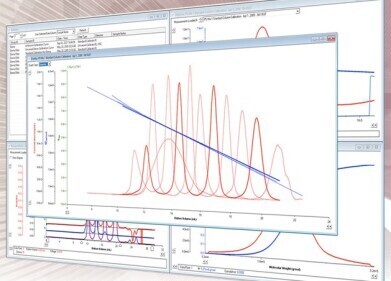Size Exclusion, Gel Permeation Chromatography (GPC)
Can Chromatography Make Polymer Coating More Sustainable?
Feb 03 2021
Coatings are everywhere, they are omnipresent in our lives. From coke cans to buildings to cars, coatings are used to add durability, protection, and cosmetic features to thousands of everyday objects. Most coatings are made from resins and polymers, and these are made from petrochemicals. But this could be about to change.
In a paper published in the journal Science Advances, scientists from the Netherlands report on coatings that they have produced sustainable alternatives. They managed to integrate the principles of green chemistry throughout the process to produce coating comparable to traditional acrylate-based coatings that are in use today. The work utilised chromatography and is reported in the paper A Coating from Nature.
Polymer coatings from wood
The researchers, based at the University of Groningen and scientists from AkzoNobel a coatings manufacturer, looked to use lignocellulose – plant dry matter or biomass. It has been described as the most abundantly available raw material on Earth for making biofuels. It is made of two carbohydrate polymers, cellulose and hemicellulose, and an aromatic polymer lignin. Lignocellulose makes up between 20-30% of the woody parts of plants.
The team of researchers reacted the lignocellulose with acid to make furfural. This can be used as a building block, but for coatings must be modified into hydroxybutenolide, a compound like acrylic acid which is used in many coatings but produced from petrochemicals. With a further modification to make the ring structure of hydroxybutenolide reactive so the monomer could be readily converted into a polymer coating.
Characterized by chromatography
The monomer is converted into a polymer coating using an initiator and UV light. The researchers said ‘Coatings are made up of cross-linked polymer chains. By combining different monomers, we could get cross-linked polymers with different properties.’ The modifications allowed coatings that could be used on glass or plastic. Harder coating could also be made by using more rigid monomers. The different polymers were characterized using gel permeation chromatography. Another type of gel chromatography is discussed in the article, Ultrahigh Sensitivity Analysis of Adeno-associated Virus (AAV) Capsid Proteins by Sodium Dodecyl Sulphate Capillary Gel Electrophoresis.
The researchers concluded ‘We managed to create coatings from a renewable source, lignocellulose, using green chemistry. And the quality of our coatings is similar to that of current acrylate-based coatings.’ The researchers have not stopped their work and are looking to develop further monomer building blocks from the furfural compound with the hope of developing new coatings
Events
Feb 03 2025 Dubai, UAE
Feb 05 2025 Guangzhou, China
Mar 01 2025 Boston, MA, USA
Mar 04 2025 Berlin, Germany
Mar 18 2025 Beijing, China











